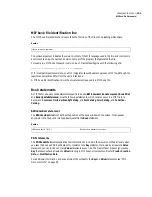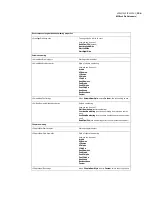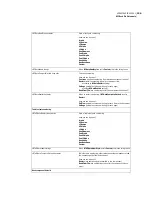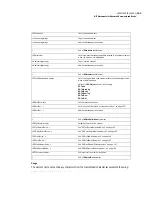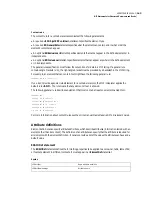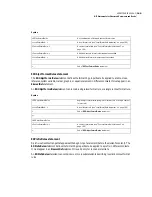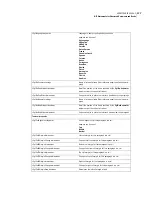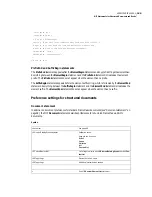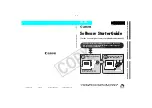
165
ADOBE FRAMEMAKER 6.0
MIF Statements for Structured Documents and Books
Format rules
Format rules allow the template builder to specify the format of an element in specific circumstances. A
format rule can be either a context rule or a level rule.
A context rule contains clauses that specify an element’s formatting based on its parent and sibling
elements. For example, one clause of a format rule could specify that a Para element has the FirstBody
paragraph format if it is the first child of a Heading element. Another clause could specify that a Para
element has the Body paragraph format in all other contexts.
A level rule contains clauses that specify an element’s formatting on the basis of the level to which it is
nested within specific types of ancestor elements. For example, one clause of a level rule could specify that
a Para element appears in 12-point type if it has only one Section element among its ancestors. Another
clause could specify that a Para element appears in 10-point type if there are two Section elements among
its ancestors.
Element definitions contain format rules grouped into the following statements:
•
EDTextFormatRules
•
EDObjectFormatRules
•
EDPrefixRules
•
EDSuffixRules
•
EDStartElementRules
•
EDEndElementRules
EDTextFormatRules statement
The
EDTextFormatRules
statement defines the formatting properties to be applied to a container, table,
table child, or footnote element in different contexts. It must appear in an
ElementDef
statement. An
EDTextFormatRules
statement can contain zero or more substatements describing level and context
format rules.
Summary of Contents for FRAMEMAKER 6.0
Page 1: ...MIF Reference Online Manual FrameMaker 6 0 Adobe ...
Page 15: ...15 ADOBE FRAMEMAKER 6 0 Introduction ...
Page 159: ...159 ADOBE FRAMEMAKER 6 0 MIF Book File Statements ...
Page 232: ...232 ADOBE FRAMEMAKER 6 0 MIF Asian Text Processing Statements ...
Page 252: ...252 ADOBE FRAMEMAKER 6 0 Examples ...

